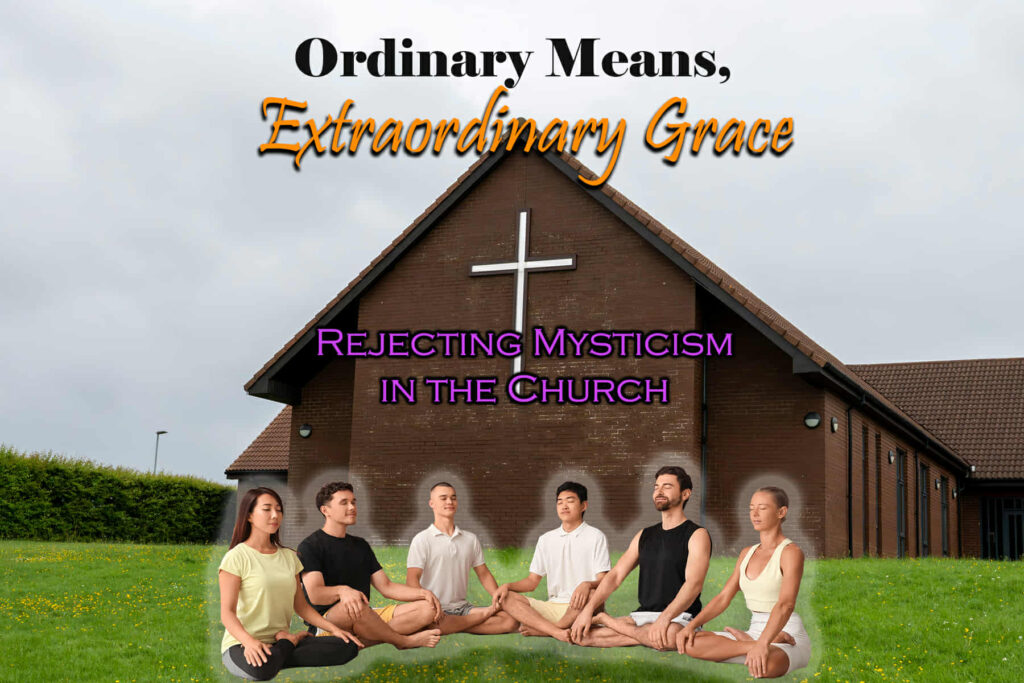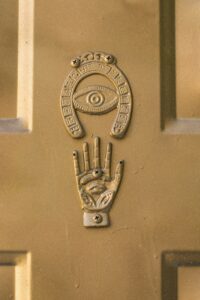⏱️ Estimated Reading Time: 8 min read
Inner Healing and Its Dangerous Teachings
By Dawn Hill
Fall 2025 | Theology for Life
Would you listen to someone as a Bible believing Christian who subscribed to such things as universalism, pantheism, New Age and New Thought practices? As a Christian, would you accept counsel from a minister who had attended seances or reportedly had demons cast out? What if a minister held to the belief of visualizing Jesus as a spirit guide in order to be healed, or that astral travel was an acceptable practice? Your answer to these questions as a Christian would be, no. All of these things would hopefully be indicators that you should seek Godly and mature Biblical counsel. Yet these beliefs and practices were held by the pioneer of inner healing, Agnes Sanford. Those who are contemplating inner healing or who have participated in it in some form (inner healing, SOZO, Theophostic prayer) need to know its origins and why it is concerning and even dangerous. The practice of inner healing has become a more popular mode of healing and deliverance in Charismatic circles, and the truth is her teaching is not rooted in Scripture or in the God of the Bible.
A few years ago, I took time to read two of Sanford’s books, one of which was her most well-known, The Healing Light. I tested what she said against Scripture, and the findings were disturbing. It led me to a few conclusions. First, many Christians do not understand what spiritual healing really means because the Word of God and the finished work on the cross have been misunderstood or diminished. Second, many have adopted superstitious and occult beliefs without realizing it. Lastly, and I do not say this lightly, another Christ has been presented in these practices. Using the name of Christ does not guarantee one to be a disciple of Jesus Christ. We must be aware of the root of inner healing. If the root system is bad, the fruit will bear that affliction.
Though Agnes professed to be a Christian, her practices ran contrary to teachings of the Bible, and she was heavily influenced by Carl Jung, a psychologist who taught about the healing of the collective unconscious, held to occult practices, and who had his own personal “spirit guide” named Philemon. Agnes held to the belief that God was a force and that there was great power in visualization. She spoke in her books of being ill due to negative vibrations while healing others through positive vibrations.
The core teaching of inner healing is the healing of memories. Agnes believed that salvation and healing can only come through uprooting negative memories buried in the subconscious, and these memories are said to dictate our behavior. There is a focus in this teaching on being wronged by others rather than taking personal responsibility for actions and sinful behavior. The practice of visualization is used to recreate a past event. Jesus is brought in as a spirit guide to sanctify the memory, forgive the person, and create a new memory that is affirmed by the visualized Jesus. These practices in and of themselves should be problematic for any believer in Christ Jesus.
In some of her books, Agnes took issue with the blood of Jesus Christ as well as being conscious of her own sin. In her book The Healing Light, she stated, “Let us tell Him (Jesus) that we do not really understand the need for Calvary and ask Him to help us understand it.” Her lack of understanding of sin and for the Savior is evident in her misuse of atonement as “at-one-ment”. This is the belief that we achieve harmony with God and essentially become God. She is quoted as saying, “Our Lord in the Garden of Gethsemane undertook the great work that we call the atonement- the at-one-ment which reunited man with God. He literally lowered His thought-vibrations to the thought-vibrations of humanity and received into Himself man’s thoughts of sin and sickness, pain and death.”
Her experience took precedence over theology, which she expressed in several of her writings. John Sandford, a minister who credited Agnes as the pioneer of inner healing, stated in a documented conversation that he exorcised demons from Agnes while she was in ministry. She believed in the pre-existence of the soul, and she noted in her books that we are all children of God. When ministering to a man with a broken bone who was not born again, she counseled him on how to be healed saying, “Ask that something come into you. Just say, “Whoever you are, whatever you are, come into me now and help nature in my body to mend this bone and do it quick.””
Her belief in pantheism is noted throughout her body of work. One example occurred in her recollection of being near a snake while outdoors. She spoke of being conscious of her oneness with God and with the snake. She also made a distinction between Jesus and the Christ, “Think of the Christ only as the spirit of God that abides in all of us and of Jesus only as the first demonstrator of that spirit.” Though she attended a few seances as a professing Christian, Agnes referred to Jesus as “the only departed person we should deliberately contact.” Let us take note of something here: Jesus Christ is resurrected. He is not departed.
She spoke of Peter utilizing levitation to walk on water, and she stated in her book The Healing Gifts of the Spirit that, “We can enter into the accumulated thought vibrations of the ages, and feel the feelings and think the thoughts of someone who lived long ago…this connection can reach back through time and forward through time and can make rapport with the thinking of someone who lived long ago or of someone who has not yet come upon this earth.” She even posed the question on this train of thought, wondering if we could send our prayers back in time and alluding to it as essential to inner healing.
There are great concerns with all of these beliefs mentioned. The roots of inner healing are certainly cloaked in darkness, and we need to test these against Scripture. When we do so, we will be set free by the truth, and this is the truth. Our moral choices determine our actions and responsibility falls on us. This is supported by Ezekiel 18:19-20, a passage among many that helps us to understand our personal responsibility for sins and transgressions. We are unable to repent for another person’s sins. Scripture makes it clear that we will give an account for our own actions before the judgment seat of Christ, whether good or bad (2 Corinthians 5:10). We will not stand before the Lord to give an account for our ancestors’ actions, our nation’s actions, or for anyone else’s actions but our own.
There is no biblical precedent of any prophet or apostle in the Bible dealing with inner healing in their personal lives, nor did they teach this as necessary in the life of believers. Inner healing is refuted by Philippians 3:13-14, 2 Timothy 4:7-8, and 2 Corinthians 5:17. We forgive others because the Lord has forgiven us. We do not need to forgive God, and He does not apologize to us. God is incapable of sin or committing trespasses. We are to ask God to forgive us of sin and trespasses that are ultimately against Him (Colossians 3:13). Jesus Christ doesn’t need our permission to do anything. He is God. He commands our obedience. He is the only Mediator between God and man. We are not to participate in visualizing Jesus or in beliefs mentioned here that run contrary to Scripture.
As Christians, we are to trust in the finished work on the cross at Calvary, the atonement for our sins so that we could be reconciled to the Father and clothed in the righteousness of Christ. We trust that God has forgiven us of our sins through Jesus Christ, and we trust in the Lord to sanctify us daily. We are to seek Godly and Biblical counsel and to stay in the written Word of God daily. You and I are going to face struggles and difficulties in life, but we are to cast our cares upon the Lord while trusting that what Jesus Christ did on the cross is sufficient to make us spiritually whole.
This article appears in the Fall 2025 Issue of Theology for Life Magazine, exploring “The Means of Grace.”

Ordinary Means, Extraordinary Grace: Rejecting Mysticism in the Church
Dawn Hill is a Christian blogger known as The Lovesick Scribe, and the host of The Lovesick Scribe Podcast. She is passionate about sharing the truth and pointing others back to Jesus Christ through the written Word as the standard of authority for Christian living and instruction while being led by the Holy Spirit into maturity. She is the author of NonProphet Woke: The Reformation of a Modern-Day Disciple. She writes articles for Christianity.com, Servants of Grace, and her blog posts have been shared by individuals such as Tim Challies. She will be featured in the upcoming docuseries, American Gospel: Spirit and Fire. She co-leads a women’s support group with Emily Massey called Snatched from the Flames, where they minister to women who have come out of the hypercharismatic and New Apostolic Reformation movement. She is a wife to Nicholas and a mother to Anabel and Ephraim. You can follow her on The Lovesick Scribe and Instagram.




